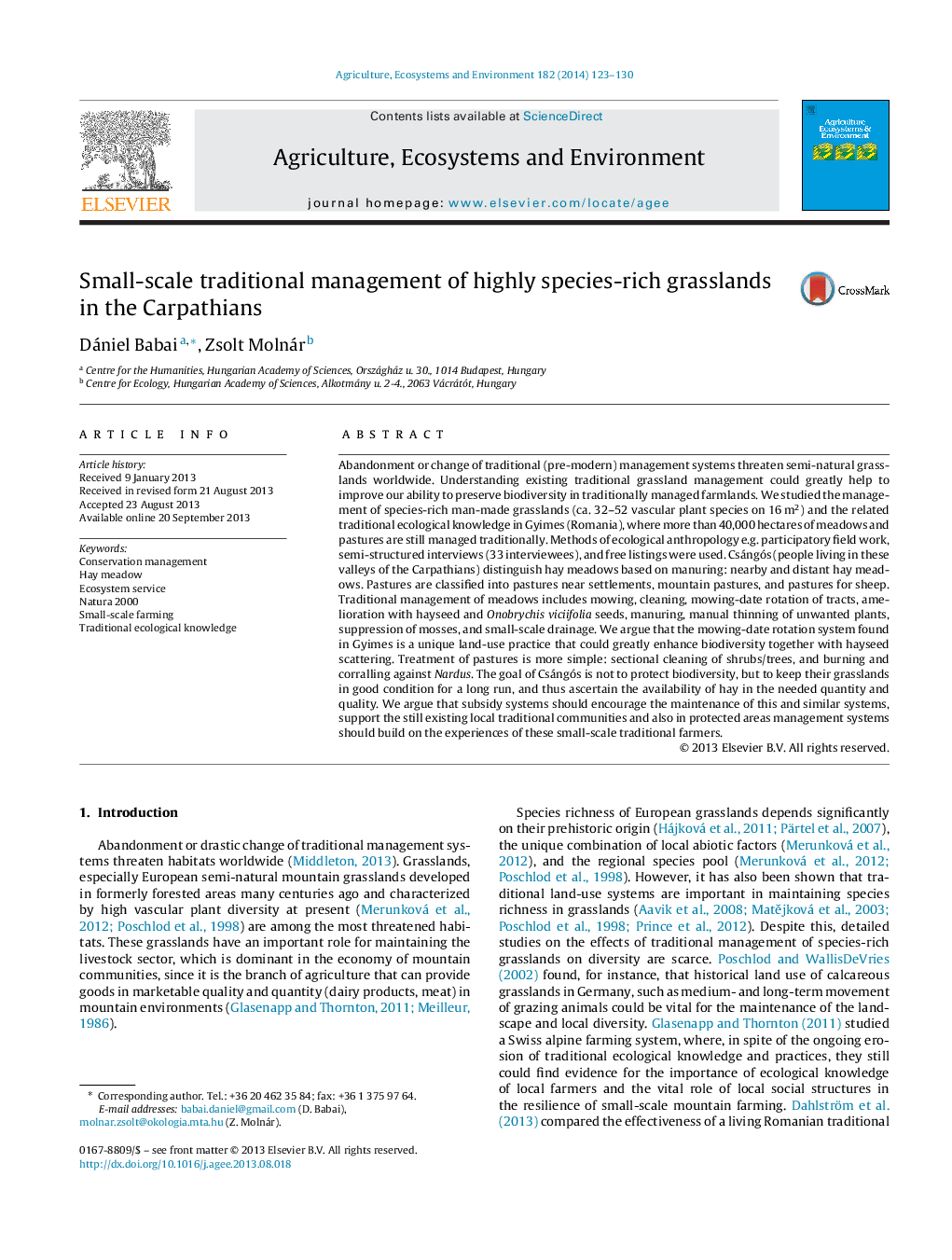| کد مقاله | کد نشریه | سال انتشار | مقاله انگلیسی | نسخه تمام متن |
|---|---|---|---|---|
| 8488015 | 1552070 | 2014 | 8 صفحه PDF | دانلود رایگان |
عنوان انگلیسی مقاله ISI
Small-scale traditional management of highly species-rich grasslands in the Carpathians
دانلود مقاله + سفارش ترجمه
دانلود مقاله ISI انگلیسی
رایگان برای ایرانیان
کلمات کلیدی
موضوعات مرتبط
علوم زیستی و بیوفناوری
علوم کشاورزی و بیولوژیک
علوم زراعت و اصلاح نباتات
پیش نمایش صفحه اول مقاله

چکیده انگلیسی
Abandonment or change of traditional (pre-modern) management systems threaten semi-natural grasslands worldwide. Understanding existing traditional grassland management could greatly help to improve our ability to preserve biodiversity in traditionally managed farmlands. We studied the management of species-rich man-made grasslands (ca. 32-52 vascular plant species on 16Â m2) and the related traditional ecological knowledge in Gyimes (Romania), where more than 40,000 hectares of meadows and pastures are still managed traditionally. Methods of ecological anthropology e.g. participatory field work, semi-structured interviews (33 interviewees), and free listings were used. Csángós (people living in these valleys of the Carpathians) distinguish hay meadows based on manuring: nearby and distant hay meadows. Pastures are classified into pastures near settlements, mountain pastures, and pastures for sheep. Traditional management of meadows includes mowing, cleaning, mowing-date rotation of tracts, amelioration with hayseed and Onobrychis viciifolia seeds, manuring, manual thinning of unwanted plants, suppression of mosses, and small-scale drainage. We argue that the mowing-date rotation system found in Gyimes is a unique land-use practice that could greatly enhance biodiversity together with hayseed scattering. Treatment of pastures is more simple: sectional cleaning of shrubs/trees, and burning and corralling against Nardus. The goal of Csángós is not to protect biodiversity, but to keep their grasslands in good condition for a long run, and thus ascertain the availability of hay in the needed quantity and quality. We argue that subsidy systems should encourage the maintenance of this and similar systems, support the still existing local traditional communities and also in protected areas management systems should build on the experiences of these small-scale traditional farmers.
ناشر
Database: Elsevier - ScienceDirect (ساینس دایرکت)
Journal: Agriculture, Ecosystems & Environment - Volume 182, 1 January 2014, Pages 123-130
Journal: Agriculture, Ecosystems & Environment - Volume 182, 1 January 2014, Pages 123-130
نویسندگان
Dániel Babai, Zsolt Molnár,